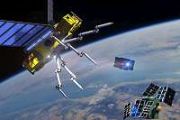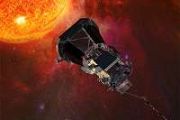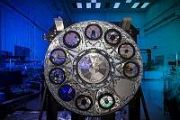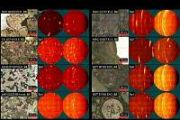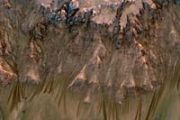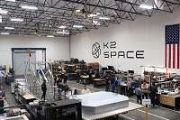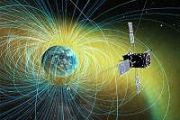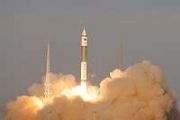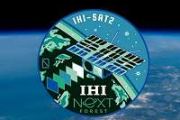
Copernical Team
Morpheus Space completes orbital test of GO-2 electric propulsion system
 Morpheus Space has announced the successful in-orbit demonstration of its GO-2 electric propulsion system, conducted in collaboration with D-Orbit. The mission met its primary performance benchmarks, validating the next-gen propulsion technology for operational deployment.
CEO Kevin Lausten commented, "This mission represents a major achievement for the Morpheus team. We set aggressive goa
Morpheus Space has announced the successful in-orbit demonstration of its GO-2 electric propulsion system, conducted in collaboration with D-Orbit. The mission met its primary performance benchmarks, validating the next-gen propulsion technology for operational deployment.
CEO Kevin Lausten commented, "This mission represents a major achievement for the Morpheus team. We set aggressive goa Rocket Lab partners with Bollinger Shipyards to transform Neutron sea recovery platform
 Rocket Lab Corporation (Nasdaq: RKLB) has selected Bollinger Shipyards to execute the transformation of its ocean recovery vessel 'Return On Investment', a vital component of its Neutron reusable rocket program.
The 400-foot vessel, currently undergoing outfitting and modification at Bollinger's shipyard in Amelia, Louisiana, is scheduled for delivery in early 2026. The project integrates
Rocket Lab Corporation (Nasdaq: RKLB) has selected Bollinger Shipyards to execute the transformation of its ocean recovery vessel 'Return On Investment', a vital component of its Neutron reusable rocket program.
The 400-foot vessel, currently undergoing outfitting and modification at Bollinger's shipyard in Amelia, Louisiana, is scheduled for delivery in early 2026. The project integrates Spire unveils flight-level analytics to assess aircraft weather exposure
 Spire Global has introduced Aircraft Exposure Analytics, a new aviation-focused tool that calculates aircraft-specific exposure to adverse weather by integrating flight trajectory data with global weather alerts.
The solution merges Spire's global multi-source ADS-B flight tracking data-sourced from both ground and satellite-with Significant Meteorological Information (SIGMET) alerts. This
Spire Global has introduced Aircraft Exposure Analytics, a new aviation-focused tool that calculates aircraft-specific exposure to adverse weather by integrating flight trajectory data with global weather alerts.
The solution merges Spire's global multi-source ADS-B flight tracking data-sourced from both ground and satellite-with Significant Meteorological Information (SIGMET) alerts. This Milky Way may host scores of hidden faint satellite galaxies
 Cosmologists at Durham University suggest the Milky Way may be surrounded by up to 100 more faint satellite galaxies than previously observed, based on high-resolution supercomputer simulations and advanced mathematical modeling.
Presented at the Royal Astronomical Society's National Astronomy Meeting, the research predicts these elusive "orphan" galaxies-nearly invisible due to being stri
Cosmologists at Durham University suggest the Milky Way may be surrounded by up to 100 more faint satellite galaxies than previously observed, based on high-resolution supercomputer simulations and advanced mathematical modeling.
Presented at the Royal Astronomical Society's National Astronomy Meeting, the research predicts these elusive "orphan" galaxies-nearly invisible due to being stri ICEYE satellite data accelerates flood relief in southern Brazil
 ICEYE has provided critical satellite-based flood mapping and intelligence to assist the government of Rio Grande do Sul in its rapid humanitarian response to widespread flooding in June.
Leveraging its Synthetic Aperture Radar (SAR) technology, ICEYE delivered high-resolution imagery capable of penetrating cloud cover, alongside its Flood Solutions service, which combines near real-time o
ICEYE has provided critical satellite-based flood mapping and intelligence to assist the government of Rio Grande do Sul in its rapid humanitarian response to widespread flooding in June.
Leveraging its Synthetic Aperture Radar (SAR) technology, ICEYE delivered high-resolution imagery capable of penetrating cloud cover, alongside its Flood Solutions service, which combines near real-time o NASA selects science payloads for Artemis lunar exploration rover
 NASA has chosen three scientific instruments to support Artemis lunar exploration, assigning two for use on the upcoming Lunar Terrain Vehicle (LTV) and reserving one for a future Moon-orbiting mission.
The LTV, part of NASA's Artemis campaign, will be the first human-driven rover on the lunar surface in over five decades. Designed to carry two astronauts or operate remotely, the vehicle i
NASA has chosen three scientific instruments to support Artemis lunar exploration, assigning two for use on the upcoming Lunar Terrain Vehicle (LTV) and reserving one for a future Moon-orbiting mission.
The LTV, part of NASA's Artemis campaign, will be the first human-driven rover on the lunar surface in over five decades. Designed to carry two astronauts or operate remotely, the vehicle i Airbus to develop advanced PAZ-2 radar satellites for Spanish defence and civil operations
 Airbus Defence and Space has secured a contract from Hisdesat to develop and manufacture two next-generation PAZ-2 radar satellites for the Spanish Ministry of Defence. The project aims to ensure continuity of service following the original PAZ satellite, operational since 2018, while significantly enhancing national space capabilities.
The PAZ-2 system will deliver major technological upg
Airbus Defence and Space has secured a contract from Hisdesat to develop and manufacture two next-generation PAZ-2 radar satellites for the Spanish Ministry of Defence. The project aims to ensure continuity of service following the original PAZ satellite, operational since 2018, while significantly enhancing national space capabilities.
The PAZ-2 system will deliver major technological upg Prime Boost Reviews: What Men Are Saying About Their Results? Ingredients, Benefits and Complaints
 Prime Boost is a cutting-edge dietary supplement that is specifically designed to improve masculine virility and vitality levels. It is made with powerful natural ingredients that are proven to improve strength and stamina in men. This supplement can support healthy male hormone levels to support better muscle growth and increased energy levels.
Prime Boost is a cutting-edge dietary supplement that is specifically designed to improve masculine virility and vitality levels. It is made with powerful natural ingredients that are proven to improve strength and stamina in men. This supplement can support healthy male hormone levels to support better muscle growth and increased energy levels. Neuro Zoom Reviews Complaints 2025: What You Must Know Before Buying (BUYER WARNING)
 Neuro Zoom is a natural supplement formulated to support healthy memory, concentration, and mental acuity. It contains a blend of memory-boosting antioxidants, minerals, vitamins, and herbs designed to promote total cognitive well-being. While many Neuro Zoom reviews exist online, a comprehensive analysis of this brain support formula is still lacking.
Neuro Zoom is a natural supplement formulated to support healthy memory, concentration, and mental acuity. It contains a blend of memory-boosting antioxidants, minerals, vitamins, and herbs designed to promote total cognitive well-being. While many Neuro Zoom reviews exist online, a comprehensive analysis of this brain support formula is still lacking. Skimming the Sun, probe sheds light on space weather threats
 Eruptions of plasma piling atop one another, solar wind streaming out in exquisite detail - the closest-ever images of our Sun are a gold mine for scientists.
Captured by the Parker Solar Probe during its closest approach to our star starting on December 24, 2024, the images were recently released by NASA and are expected to deepen our understanding of space weather and help guard against s
Eruptions of plasma piling atop one another, solar wind streaming out in exquisite detail - the closest-ever images of our Sun are a gold mine for scientists.
Captured by the Parker Solar Probe during its closest approach to our star starting on December 24, 2024, the images were recently released by NASA and are expected to deepen our understanding of space weather and help guard against s 




